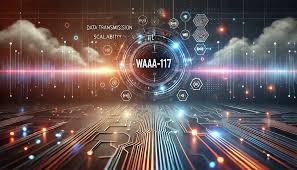Artificial intelligence (AI) has taken the world by storm, and its impact on storytelling has been nothing short of revolutionary. In recent years, AI roleplay stories and episodes have emerged as a fascinating blend of creativity and technology. These AI-driven narratives offer users an entirely new way to engage with characters, settings, and plots, immersing them in adventures that feel personalized and unique. One of the most talked-about creations in this realm is Waaa 117, a series that has captivated audiences with its innovative approach to AI storytelling.
What is Waaa 117?
Waaa 117 isn’t your typical story. It’s an evolving, AI-driven narrative that constantly adapts based on the input of its users. Imagine a story that feels like it’s being written just for you, where the characters respond to your choices and the plot twists depend on your actions. That’s the magic of AI roleplay stories, and Waaa 117 leads the pack with its seamless blending of machine learning and human creativity.
This series is part of a larger trend where AI is being used to craft immersive roleplay experiences, giving users the power to steer the direction of a story, while still feeling like they’re part of a cohesive and well-constructed plot. The AI behind Waaa 117 is programmed to adapt to different scenarios, making each user’s experience unique and engaging.
How Does AI Create These Stories?
So, how exactly does AI generate such engaging narratives? It all comes down to machine learning algorithms and natural language processing (NLP). AI is able to analyze huge amounts of data, including character behavior, dialogue styles, and typical story arcs, to craft a narrative that feels natural and spontaneous. The beauty of this system is its ability to learn from previous inputs, making each new episode smarter and more immersive.
Waaa 117 uses advanced NLP techniques to generate dialogue and character interactions that feel human, while still allowing for unexpected plot developments that surprise and delight users. The AI engine behind it can process multiple user inputs at once, adapting the story in real-time to suit individual preferences. Whether you prefer high-stakes action or emotional character development, the AI has you covered.
Why Are AI Roleplay Stories So Popular?
The rise of AI roleplay stories like Waaa 117 can be attributed to several factors. First, they provide a personalized experience unlike anything traditional storytelling methods can offer. With AI, the story doesn’t follow a rigid script — instead, it evolves based on your decisions, creating a sense of ownership and agency that draws people in.
Additionally, AI-generated stories are highly scalable. While traditional content creation can take months or even years to produce, AI can churn out fresh narratives almost instantly. This means that users can enjoy new episodes or entire story arcs on a frequent basis, keeping them engaged and excited for what’s coming next.
The interactive nature of AI roleplay also plays a big role in its popularity. Many users enjoy the feeling of being part of the story, shaping the outcome based on their choices. It’s a step beyond passive consumption, offering a more active and dynamic storytelling experience.
The Future of AI Roleplay and Storytelling
With the success of series like Waaa 117, it’s clear that AI-driven storytelling is here to stay. As AI technology continues to improve, we can expect even more sophisticated and immersive experiences in the future. Advances in machine learning and NLP will allow for even greater complexity in character development, plot twists, and world-building, making AI roleplay stories increasingly indistinguishable from those created by human writers.
There’s also potential for AI roleplay to expand beyond entertainment. We may see applications in education, therapy, and even workplace training, where interactive, AI-generated scenarios could help people learn new skills or explore complex emotional landscapes in a safe and controlled environment.
How to Get Started with Waaa 117
Intrigued by the idea of AI roleplay? Getting started with Waaa 117 is easier than you might think. Many platforms offer free access to the series, allowing users to dive into the story without any upfront cost. Once you’re in, the AI will guide you through the initial stages, helping you get acquainted with the characters and the world they inhabit.
As you progress through the story, you’ll be given choices that influence the direction of the plot. The more you engage with the characters and make decisions, the more personalized the story becomes. Before long, you’ll find yourself fully immersed in a world that feels like it was made just for you.
Conclusion
Waaa 117 is at the forefront of a storytelling revolution, using AI to create interactive, engaging, and highly personalized narratives. Its blend of machine learning and human creativity offers a glimpse into the future of storytelling, where the lines between creator and consumer are blurred, and the story itself adapts to the audience. Whether you’re a fan of traditional roleplaying games or just curious about the potential of AI in entertainment, Waaa 117 is a must-try experience.
As AI technology continues to evolve, we can only imagine where stories like this will take us next. One thing is for sure — the future of storytelling is here, and it’s more exciting than ever.
